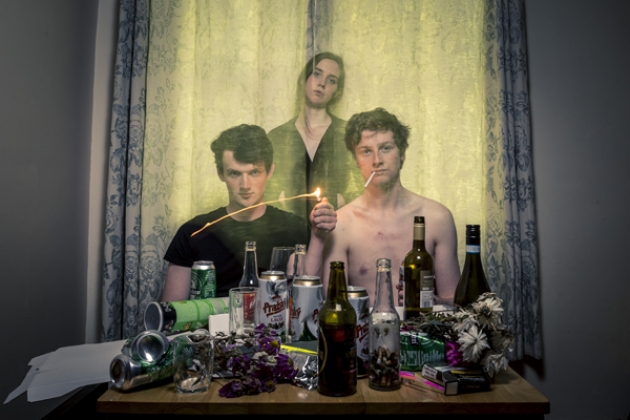
With Dublin Fringe Festival now at a close, it’s important to reflect on a festival that boasted plays and performances of wildly different calibres. With many left reeling from the pieces they saw and others curious for more, we take a look back on the highlights of this year’s festival.
A large number of the shows were extremely well attended, including performances that were not widely publicised and were performed in venues that were obscure or off the beaten track. For example, The PeopleSway at MLV Studios in Castleforbes Business Park was one of the more difficult shows to reach, but gathered a big crowd nevertheless. After each performance, you could hear audience members scrambling for the exit doors in order to reach another theatre and take in another play, indicative of the pervasive air of excitement. Though the numbers aren’t in, the general atmosphere suggests that any commercial ambitions of the festival have been achieved.
However, what of the more idealistic and conceptual ambitions outlined in the festival’s curatorial callout? Festival Director Ruth McGowan called for a “new voices, new moves, new thoughts, new ways of telling”. Not only was there an abundance of new theatre coming from different social strata, we found that the methods of theatrical expression were as extremely varied as you might expect from the Fringe. This insistence on new voices was brought readily to the mind when watching Unwoman Part III at the Samuel Beckett Theatre. One of the biggest shows of the festival, both in attendance and press attention, the one-woman play depicted a woman who did not speak until the final moments, yet her chilling cries of pain and animalistic transformations allowed it to speak volumes.
In large print, the callout also expressed a desire for “a festival of antidotes”. While it is of course difficult to present a cohesive expression through an entire festival of shows, this idea was not adhered to across the board. Three memorable shows, Unwoman Part III, Everything Can Be Dismantled, and The PeopleSway seemed to share a common bent towards instigating debate and building frustration rather than engaging in anything described in the callout.
However, these thematic ambitions were addressed in the extremely successful Beat. Presented by recent Lir graduate Fionntán Larney and Trinity student Dominic O’Brien, the show was undoubtedly one of the highlights of the festival. The hip-hop musical embodied Ireland’s ongoing discussion about mental health while also tackling issues such as drug abuse and misogyny. With a palpable momentum, unparalleled in the festival, it’s likely that this is not the last we’ve heard of Beat.
Despite this commendable piece, there were of course shows of a lower calibre. These inconsistencies culminated in the vapid Everything Can Be Dismantled. Poorly performed and clumsily structured, it was a weak attempt at social commentary, doled out to a paying audience at The Lir.
Having said that, the vast majority of productions were of a standard to be proud of and inspired curiosity and excitement about what Irish theatre can be. It would be great to see this kind of risk-taking work put forward in the mainstream. The attendance this year certainly suggests a market for it. Here’s to next September.






